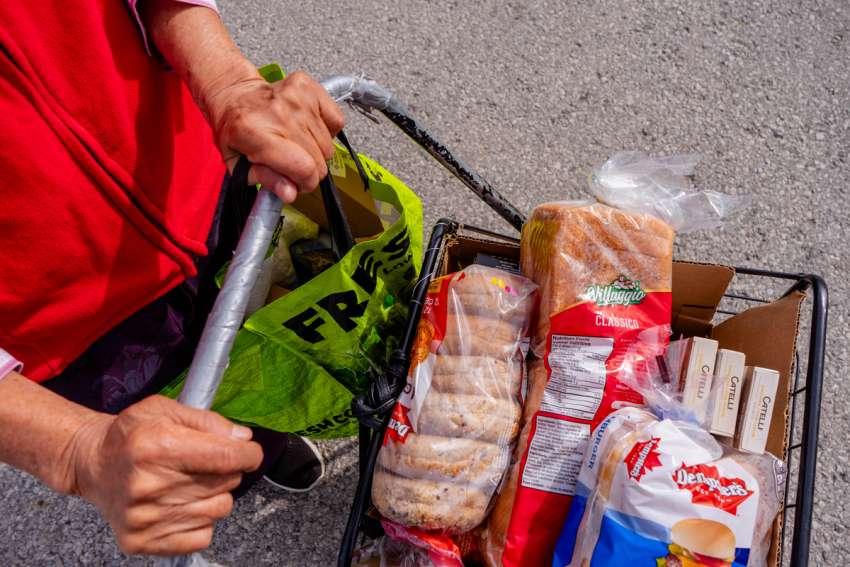The Salvation Army of Canada’s Spring 2024 Canadian Poverty and Socioeconomic Analysis report is more evidence revealing concerns as basic needs affordability and food bank reliance continue to rise unsettlingly.
What's even more concerning is the significant surge in first-time food bank users. Statistics show last autumn there was a 43-per-cent increase in first time clients, which rose to a staggering 61 per cent this spring.
“The increase in first-time users of food banks is an alarming indicator of the conditions that many Canadians are facing,” said Lt-Col. John Murray, The Salvation Army of Canada and Bermuda’s territorial secretary for communications. “We often find that when people show up at a food bank, it can be the tip of the iceberg for additional issues they may be facing.”
Twenty-six per cent of respondents declared they have had to skip or substantially reduce the size of at least one meal in a day, up from 21 per cent in October.
The Catholic Register contacted Daily Bread Food Bank in Toronto and Food Banks Mississauga to learn about these non-profit’s respective situations and gain insight into the root causes driving the unceasing increase in food bank clientele.
Neil Hetherington, CEO of Daily Bread Food Bank, reported there were 350,000 client visits in May, which is up from 311,000 in April. This represents a jaw-dropping ascent from approximately 60,000 clients pre-pandemic. In addition to Daily Food Bank’s regular stream of clients who rely on its services because their income derives from disability support payments, Hetherington said there are two new categories of customers propelling this growth.
“(First) is the individuals who are making what we used to consider was a decent salary, let’s call it $45,000 or $50,000. They might be a single parent, and even if they are not, the cost of a one-bedroom apartment in Toronto is now $2,100," he said. "They are working but they cannot afford to live in the city. The second group are new Canadians, which is divided between international students and those in our refugee program.”
Meghan Nicholls, CEO of Food Banks Mississauga, further elaborated on why many newcomers to Canada are being forced to turn to food banks so soon after their arrival.
“I really point to folks not having correct information about the cost of living in Canada and what it would take for them to get started,” said Nicholls. “Folks have come to Canada with their savings and ready to get going, but they have found that it just doesn’t carry them as far as they thought. Especially for international students who came to Canada being told they only need $10,000 a year to live, but $833 a month isn’t even going to find you a room to rent, let alone cover all your basic needs.
“We have to make sure the information given to newcomers is adequate to help them get settled at first,” continued Nicholls. “We have to invest in settlement services and make sure all those supports are there for people joining the Canadian society and economy so they don’t have to rely on food banks.”
As for Food Banks Mississauga’s situation, Nicholls said client visits are up 58 per cent from a year ago and 200-per-cent higher than before COVID-19. She added there are 18,000 to 20,000 unique users per month.
Both Hetherington and Nicholls advocate for lawmakers to formulate policies and initiatives that can ease these burdensome times. Hetherington said a lack of housing, particularly affordable units, needs to be addressed. He referred to how after the Second World War, with a much smaller population, Canada mobilized to build over 600,000 homes in a year. Now, the average number of home completions is around 205,000 annually, according to the Fraser Institute.
Nicholls said efforts must be taken to enhance affordability, particularly food.
“We can’t innovate to reduce food insecurity. We are a Band-Aid that helps people survive food insecurity. We are in the harm-reduction business. The only things that can fix it are increasing incomes or lower the cost of living.”


